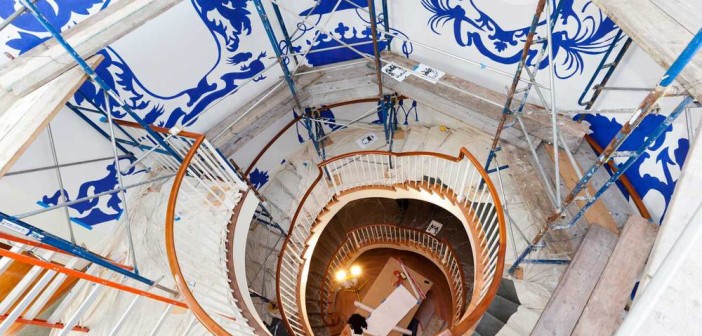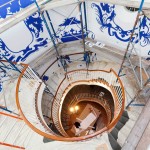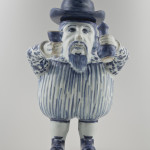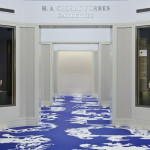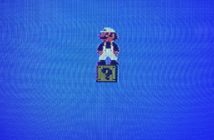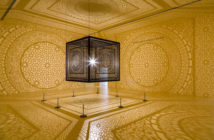Michael Lin’s FreePort project, on view at the Peabody Essex Museum, brings a contemporary perspective to the museum’s renowned Asian export art collection. The FreePort Series, launched in 2010 by Curator of Contemporary Art Trevor Smith, invites well-known contemporary artists to create installations that engage directly with the museum’s permanent collection and its many layers of history. Previous contributing artists have included Charles Sandison, Susan Philipsz, and Nick Cave. Placing contemporary works within the historic collection of the Peabody Essex Museum creates a dynamic relationship between past and present. Curatorial endeavors such as the FreePort Series demonstrate how museums are finding exciting new ways to connect audiences to their permanent collections.
The inspiration for Lin’s project began when he looked through the museum’s collection of Asian export art. Traditionally, decorative objects in museums, including many in this collection, are portrayed as one-of-a-kind, even when they were actually made in factories and reproduced many times for different clients. In his FreePort project, Lin wanted to explore the production and economics behind these particular kinds of works. For the first part of the project, Lin incorporates the well-known vernacular of his large-scale ornamental patterns. These painted murals have been installed in public places such as skate parks, tennis courts, and cafes, and as a result, viewers become part of the works as they move on, around, and through them. Within the Forbes Gallery at the Peabody Essex, oversized blue and white armorials have been painted onto the floor and extend to the walls of an adjacent stairway. These designs are inspired by the dinnerware on display in the gallery that was made for European nobility. Lin’s armorials, however, feature no identifying marks and are completely anonymous. Regal shapes embellished in size have been emptied of their original significance and commemorate no one. Though Lin designed the armorials, local artists did the onsite painting and installation. Lin relies on a large team to create his installations, much like the production factories that relied on anonymous workers to create the decorative historic objects on display in the gallery.
The second part of Lin’s project explores the ideas of repetition and mass production by replicating a late-1600s figurine, Mr. Nobody. Lin’s reproductions are on display alongside the original work of blue and white porcelain, which was one of the first depictions of a European in Chinese porcelain. The middle of the gallery is filled with hundreds of copies of Mr. Nobody displayed on ceramic drying racks. Row after row, this miniature rotund man with a cup in one hand and a bottle in another is repeated — bringing it back to life through the re-creation of a once-forgotten object, but also negating its uniqueness and singularity. With this installation, Lin blurs the lines between original and copy and recreates the mass production of the original Mr. Nobody, which was made in factories in China. Like the armorial mural, Lin did not create the replica porcelain himself, but employed skilled workers at a factory in Chao Zhou, China. The similar production methods of Lin’s replicas and Mr. Nobody are clearly illustrated through accompanying photographs of Lin’s porcelain workers alongside 19th century paintings of similar workers generations earlier. Lin’s works are not focused on an artistic singularity or studio practice, but an exchange of ideas and the relationships between a team of participants.
FreePort [No. 005]: Michael Lin is on view March 22, 2012 to December 31, 2013 at the Peabody Essex Museum.

